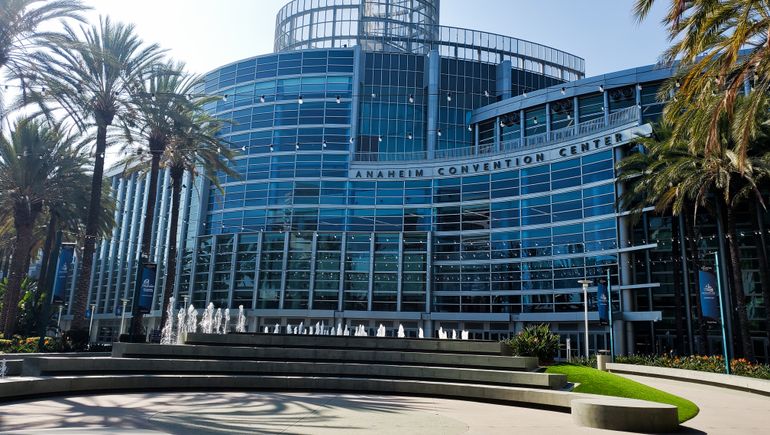As medical device leaders gather this week at AdvaMed’s annual Medtech Conference, several questions loom over the industry. After years of pandemic-driven uncertainty, supply chain snags and financial pressures, what does growth look like for the sector? And how will technologies including artificial intelligence and a new class of GLP-1 drugs affect medical device companies in the long term?
The challenges that emerged last year have intensified, according to a report released Monday by professional services firm Ernst & Young. Investment and mergers have declined, as have companies’ stocks and IPOs.
Here are five takeaways from the report:
1. M&A is ‘practically nonexistent,’ but could accelerate
Mergers and acquisitions have been “really nonexistent” so far in 2023, EY Life Sciences Partner John Babitt said on a call with reporters. The total value of deals decreased 44% to $44.6 billion for the 12-month period ending June 30, 2023, according to EY’s report.
There have been just a handful of large deals this year, with the largest being Johnson & Johnson’s $16.6 billion purchase of Abiomed, Globus’ $3.1 billion purchase of NuVasive and Thermo Fisher’s $2.6 billion purchase of The Binding Site.
Despite the slowdown, Babitt still sees an opportunity for acquisitions, particularly purchases of smaller companies. Spinoffs could drive deal-making, he said, noting that GE HealthCare has bought at least five firms since it was spun out into a standalone company. He also referred to a Reuters report that said the Carlyle Group may be looking to buy Medtronic’s connected patient monitoring and respiratory care businesses.
“I think that private equity will remain opportunistic and look at some of these larger assets,” he said.
Pressures from venture capital firms looking for a return on their investment could also drive M&A, Babitt said.
“Without an active IPO market, there is actually a receptive M&A market,” he said. “People are confident that there’s enough interest and appetite from corporates to step up to pay high valuations for good assets, and that those types of deals are going to get done.”
2. Spinoffs are still in
After what EY referred to as “the year of the spin,” Babitt expects medical device companies to continue to use this strategy. J&J recently spun out its consumer health business Kenvue, giving its medtech and pharma segments more cash for acquisitions.
Meanwhile, Baxter is in the process of spinning out its kidney care business, dubbed Vantive, and 3M has poached medtech execs to lead its planned healthcare spinoff.
“I think we’re still going to see more spin transactions,” Babitt said.
Spinoff companies tend to outperform the broader markets once they’re free from their parent companies, he added, pointing to an analysis EY conducted with Goldman Sachs.
“They can deploy capital more efficiently and, frankly, are willing to take more chances on investments both internally and inorganically through creative M&A,” Babitt said. “That’s a recipe that’s working.”
3. Revenue growth has slowed
Coming out of the COVID-19 pandemic, medical device companies experienced revenue growth as patients began to return for procedures. That growth has slowed in subsequent years, however, leading industry watchers wondering what to expect in the future.
In 2022, medical device revenues increased by 3.5% to $573 billion, compared to the 16% growth reported in 2021. The slowdown continued in the first half of 2023, with revenues for large medtech firms “essentially flat” compared to the prior year period, according to EY’s report.
Based on these numbers, 2021’s growth rates could be seen as an outlier related to pandemic recovery rather than a signal for the future.
The total dollars have increased “pretty substantially,” Babitt said, but it seems likely that industry growth going forward will be closer to a rate of 5% to 6% than historical compound annual growth rates of 9% to 10%. The reason is a lack of new devices creating billion-dollar markets, like TAVR and mitral valve devices did a decade ago.
“I think people were kind of hoping that renal denervation was that next billion-dollar market. And that someone would finally take on Intuitive and grow robotic surgery from more than 3% to 4% of cases,” Babitt said. “I think that there’s the opportunity, but we do need to continue to fuel that innovation.”
4. Medtech investment fell to a seven-year low
Equity investment in medical device companies fell to its lowest point in seven years, declining 27% to $13.8 billion, according to EY’s report. This decline could affect smaller device companies, which drive innovation but rely on financing from larger medtech companies or external investors.
Total medtech financing rose 9% to $32.8 billion in the year ending June 30, but this was largely driven by a 72% increase in debt, according to the report. And unlike previous years, where debt was largely used to fund acquisitions, in the last year it went to repaying or refinancing existing debt, working capital and stock buybacks.
There are two areas where investors continue to pour in the dollars: AI and robotics, Babitt said.
“I’m always amazed, every year for the last three, maybe four years, tons of capital is still pouring into robotic surgery,” Babitt said.
5. Medtech stocks and IPOs have declined
Shares for publicly traded medical device companies have declined, following broader stock market trends. By the end of July, company valuations were just 22% higher than they were in January 2020, according to the report. Total market capitalization for the sector decreased by 28% to nearly $1.6 trillion.
Medtech commercial leaders identified by EY traded about on par with a composite of U.S. and European stock indexes, while an index of digital health companies traded much lower.
In total, just four medical device companies went public during the year ending June 2023, raising $40 million. For comparison, during the prior-year period, 39 companies went public, raising $4.4 billion.

